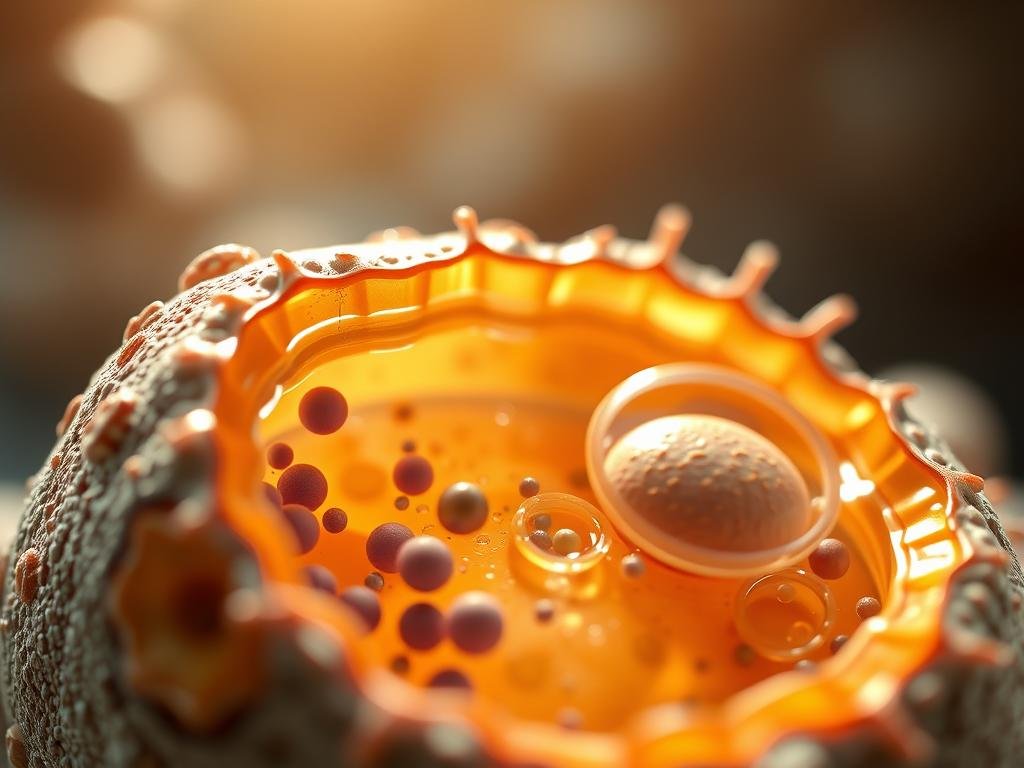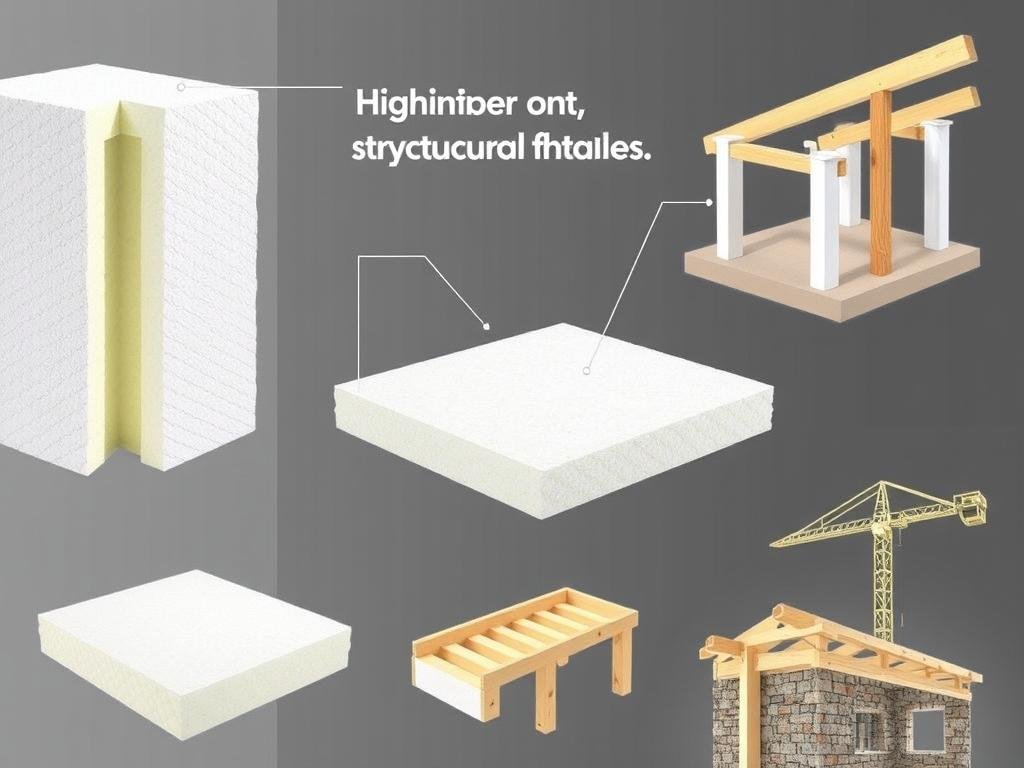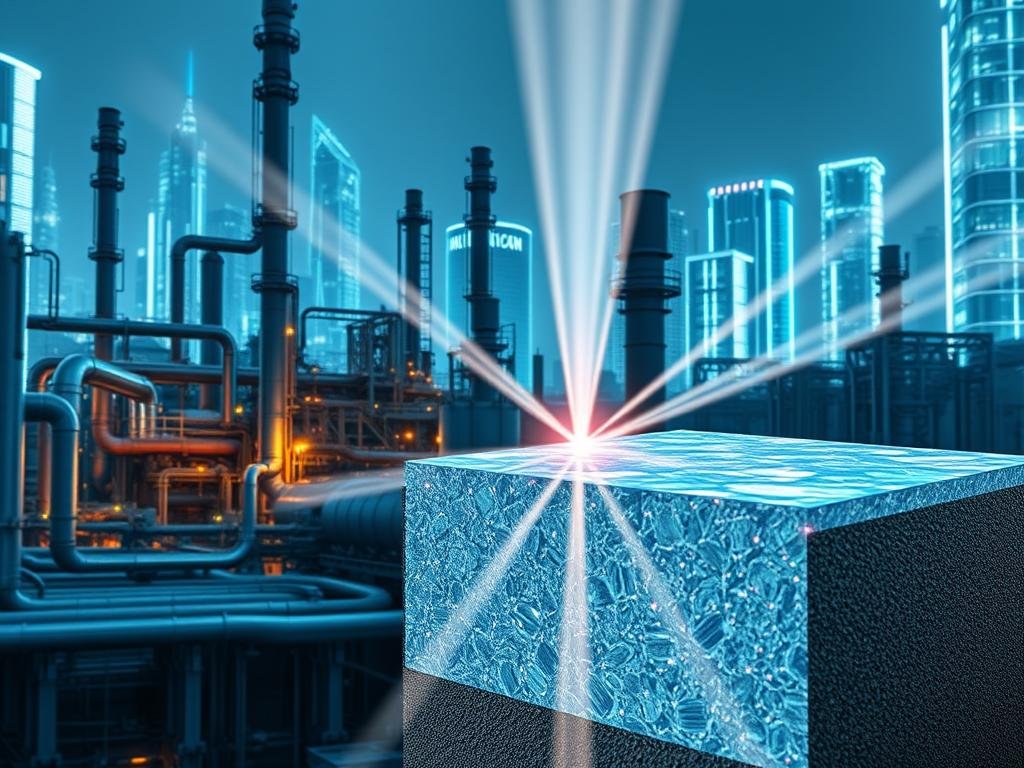Polyurethane, a versatile polymer, is composed of organic units joined by carbamate links. Its unique chemical structure allows for a wide range of applications, from soft cushioning to rigid structural components.
The mass 每單位 音量 of polyurethane, or its density, plays a crucial role in determining its physical 屬性 and suitability for specific uses. Understanding the differences between flexible and rigid foams is essential for making informed decisions in various industries.
By examining the chemical composition, manufacturing processes, and structural properties of polyurethane materials, we can gain insight into how density variations impact their performance characteristics.
Understanding Polyurethane Materials
Understanding polyurethane materials requires a deep dive into their composition, history, and production processes. Polyurethane is a versatile polymer that has been widely used in various industries.
What is Polyurethane?
Polyurethane is a type of polymer that is formed by the reaction of polyols with diisocyanates. This reaction creates a material that can be tailored to have specific properties, making it suitable for a wide range of 應用程式.
化學成分與結構
The chemical composition of polyurethane is characterized by the presence of urethane groups. The structure of polyurethane can vary depending on the type of polyol and diisocyanate used, as well as the presence of other additives. This variability allows for the creation of different types of polyurethane foams and materials.
Historical Development of Polyurethane
The history of polyurethane began in 1937 when Otto Bayer and his team first synthesized these polymers. Early development focused on the 生產 of fibers and flexible foams, with limited applications as aircraft coatings during World War II. The commercial availability of polyisocyanates in 1952 marked a significant breakthrough, enabling the production of flexible polyurethane foam using toluene diisocyanate (TDI) and polyester polyols.
The introduction of polyether polyols in the mid-1950s further revolutionized the industry, providing cheaper and more water-resistant materials. Throughout the decades, advancements in polyurethane chemistry and manufacturing processes have expanded its range of applications and improved material properties.
The Science of Polyurethane Density
Understanding the density of polyurethane materials is crucial for determining their suitability for various applications. Density is a fundamental property that affects the performance, quality, and usability of these materials.
Defining Density in Polyurethane Materials
Density in polyurethane materials refers to the mass per unit volume of the foam. It is typically measured in kilograms per cubic meter (kg/m³). The density of polyurethane foam is calculated using the formula ρ=M/V, where ρ is the density, M is the mass, and V is the volume. This measurement is critical as it influences the material’s properties, such as its insulation capabilities, compressive strength, and durability.
Feed, Bulk, and Core Density Explained
In the context of polyurethane foam, density can be categorized into different types, including feed density, bulk density, and core density. Feed density refers to the density of the raw materials used to produce the foam, while bulk density is the overall density of the foam, including any airspaces or voids. Core density, on the other hand, is the density of the foam material itself, excluding any external factors. Understanding these different density measurements is essential for optimizing the production process and ensuring the quality of the final product.
Methods for Measuring Polyurethane Density
There are several methods for measuring polyurethane density, including the use of national standards such as GBT6343, ASTM D3574, and ISO845. The most common technique involves cutting a regular geometric sample from the foam, measuring its dimensions to calculate volume, weighing it to determine mass, and then calculating density using the formula ρ=M/V. For irregular foam samples, the Archimedes principle can be employed by measuring the volume of water displaced by the foam sample. Advanced laboratory techniques may also employ specialized equipment such as gas pycnometers for highly accurate density measurements.
As noted by industry experts, “The accurate measurement of polyurethane density is critical for ensuring the quality and performance of the material.” This highlights the importance of using reliable and consistent methods for measuring density.
Factors Affecting Polyurethane Density
Understanding the factors that influence polyurethane density is crucial for its application. The density of polyurethane foam is a critical property that affects its performance in various uses.
Raw Materials and Their Impact
The choice of raw materials significantly influences the density of polyurethane products. Different polyols and isocyanates have varying molecular weights and structures, which impact the final density of the foam. For instance, using higher molecular weight polyols can result in a lower density foam.
Blowing Agents and Their Role
Blowing agents play a crucial role in determining the density of polyurethane foam. They generate gases that expand the foam, creating its cellular structure. The type and amount of blowing agent used directly affect the foam’s density and cell structure.
Chemical Additives and Catalysts
Chemical additives and catalysts are essential in controlling the reaction kinetics of polyurethane formation. Catalysts, such as tertiary amine and alkyl tin compounds, influence both the gelling and blowing reactions, thereby affecting the final density and cell structure of the foam. Surfactants stabilize gas bubbles, controlling cell size and uniformity, which significantly impacts the consistency of density throughout the foam.
The balance between gelling and blowing catalysts is carefully managed to control the timing of polymer solidification relative to gas expansion, directly impacting the final density and cell structure. Specialized additives like cell openers can create pathways between cells in flexible foams, affecting not only the cell structure but also potentially reducing density by increasing the open-cell content.
Cell Structure and Its Relationship to Density
Understanding the relationship between cell structure and density is essential for optimizing polyurethane foam properties. The cell structure of polyurethane foam is a complex arrangement of cells that can be either open or closed, and this structure plays a significant role in determining the foam’s density.
Open-Cell vs. Closed-Cell Structures
Polyurethane foams can have either open-cell or closed-cell structures. Open-cell foams have cells that are interconnected, allowing for airflow and flexibility, whereas closed-cell foams have cells that are sealed, providing better insulation and rigidity. The type of cell structure is crucial in determining the density of the foam.

How Cell Structure Influences Density
The cell structure of polyurethane foam directly influences its density. Several factors contribute to this relationship:
- Cell size: Smaller cells typically result in higher density foams as more polymer material is distributed throughout the same volume.
- The ratio of polymer to gas: A higher polymer content relative to gas results in higher density materials.
- Cell wall thickness: Thicker cell walls contain more polymer material, contributing to higher density foams.
- Uniformity of cell structure: More uniform cell structures result in more consistent density properties.
細胞結構與密度之間的關係並不總是直接的,因為製造技術可以根據特定配方和加工參數產生高密度的開孔泡棉或相對較低密度的閉孔泡棉。
彈性聚氨酯泡棉特性
具有彈性體特性的柔性聚氨酯泡棉,廣泛應用於需要彈性、耐用性和舒適性的場合。這些泡棉的獨特結構,源自於硬軟共聚段的相分離,使它們能夠提供支撐與彈性。
彈性聚氨酯的密度範圍
柔性聚氨酯泡棉通常具有一個對其在各種產品中應用至關重要的密度範圍。這些泡棉的密度可能會有所變化,影響其性能和適用性。一般而言,柔性聚氨酯泡棉的密度範圍在每立方英尺1.5到3.0磅(pcf)之間,部分配方為了特殊應用而超出此範圍。
軟性泡棉的物理性質
柔性聚氨酯泡棉的物理特性,例如拉伸強度、撕裂阻力和壓縮永久變形,對於判斷其適用於各種應用的適用性至關重要。這些特性受到泡棉的密度、細胞結構和配方的影響。例如,較高密度的泡棉往往具有較佳的拉伸和撕裂強度,使其在嚴苛的應用中更具耐用性。
如行業專家所指出的,「柔性聚氨酯泡沫的細胞結構在其物理性質中扮演著重要角色,低密度泡沫中較常見開放式細胞結構,而高密度配方則多為封閉式細胞結構。」這些泡沫的物理性質可以通過調整配方來定制,從而實現各種性能特性。
在應力下的機械行為
彈性聚氨酯泡棉呈現具有三個明顯區域的應力-應變曲線:初始的線性彈性區域,接著是細胞壁屈曲的平台區域,最後是泡棉顯著壓縮的密實區域。壓縮力偏轉(CFD)或壓痕力偏轉(IFD)值,衡量壓縮泡棉至特定百分比所需的力,通常會隨著密度增加而提高。
- 柔性泡棉在受力時的機械行為也受到其滯後現象的影響,滯後現象是指載入與卸載能量之間的差異。
- Fatigue resistance in flexible polyurethane foams generally improves with increasing density, with higher density foams maintaining their support properties over more compression cycles.
Rigid Polyurethane Foam Characteristics
Rigid polyurethane foams exhibit a range of characteristics that make them suitable for demanding applications. Their unique properties are influenced by their chemical composition and structure.
剛性聚氨酯的密度範圍
The density of rigid polyurethane foams typically ranges from 1.5 to 12 pounds per cubic foot (pcf), with some specialty foams having densities even higher. This density range allows for a variety of applications, from insulation to structural components.
| Density (pcf) | 典型應用 |
|---|---|
| 1.5-3 | Insulation, packaging |
| 3-6 | Structural panels, construction |
| 6-12 | High-strength structural applications |
Physical Properties of Rigid Foam
Rigid polyurethane foams possess excellent physical properties, including high compressive strength, low thermal conductivity, and good dimensional stability. The closed-cell structure of these foams contributes to their superior insulation capabilities and resistance to moisture absorption.
The physical properties of rigid polyurethane foams are influenced by their chemical composition. As the hard segments are covalently coupled to the soft segments, they inhibit plastic flow of the polymer chains, thus creating elastomeric resiliency.
Structural Integrity and Load-Bearing Capacity
The load-bearing capacity of rigid polyurethane foams increases exponentially with density. High-density variants are capable of supporting substantial static and dynamic loads without significant deformation. Key characteristics include:
- 壓縮蠕變阻力隨著密度增加而顯著提升。
- 剪力強度與密度成正比增加,使得較高密度的泡棉能抵抗會導致較低密度變體失效的力量。
- 抗衝擊性與密度密切相關,較高密度的泡棉能更有效地吸收和分散衝擊能量。
比較聚氨酯密度變體
了解各種聚氨酯密度變體之間的差異,對於選擇適合特定應用的材料至關重要。這些變體的特性可能會顯著影響其性能和適用性。
密度與硬度:常見誤解
許多人認為聚氨酯泡棉的密度與硬度是直接相關的。然而,密度指的是每單位體積的質量,而硬度則與材料對壓縮的抗阻力有關。高密度泡棉可以是堅硬或柔軟的,取決於其配方和細胞結構。區分這些特性以選擇合適的材料是非常重要的。
壓縮與恢復特性
聚氨酯泡棉的壓縮與回復特性會因密度而有顯著差異。較高密度的泡棉通常具有更好的抗壓性能和更快的回復時間。這是因為較密實的材料具有更堅固的細胞結構,能更有效地承受壓力並恢復到原本的形狀。
耐用性與壽命差異
耐用性是聚氨酯泡棉壽命中的一個關鍵因素。較高密度的變體通常具有更高的耐用性,因為它們對疲勞、磨損和水解降解的抵抗力較強。高密度泡棉的耐用性提升使其更適用於材料受到頻繁使用或嚴苛條件的應用場合。
總結來說,聚氨酯變體之間的密度差異對其性能和表現具有顯著影響。通過了解這些差異,使用者可以選擇最適合其特定需求的材料,確保最佳的性能和壽命。
熱性質在密度範圍內
密度在決定聚氨酯泡沫的熱特性方面扮演著關鍵角色。這些材料的熱性能對於各種應用都至關重要,從建築物的隔熱到家具的緩衝。
密度隔熱能力
聚氨酯泡沫的絕緣能力受到其密度的顯著影響。一般而言,較高密度的泡沫由於其更堅固的結構和較低的氣體滲透性,具有較佳的熱絕緣性能。低密度的柔性聚氨酯泡沫,雖然在絕緣方面不如高密度泡沫,但仍具有一定的熱阻能力。這些泡沫的熱傳導率各異,較高密度的變體通常展現較低的熱傳導率,因此具有更好的絕緣性能。
例如,高密度硬質聚氨酯泡沫常用於建築中,因其優異的隔熱性能,能在不同外部條件下維持建築內部的穩定溫度。
耐溫性與使用範圍
聚氨酯泡沫的服務溫度範圍在不同密度範圍內差異很大。較高密度的變體通常由於其更堅固的聚合物結構,提供更寬的操作溫度範圍。低密度彈性聚氨酯泡沫通常在 -40°F 到 180°F(-40°C 到 82°C)之間保持其功能特性,可能會暫時超出此範圍。
相比之下,高密度剛性聚氨酯泡沫能承受-100°F到250°F(-73°C到121°C)的連續使用溫度範圍,某些特殊配方甚至將此範圍擴展得更廣。泡沫在負載下開始變形的熱變形溫度,無論是柔性還是剛性聚氨酯變體,都會隨著密度增加而提高,顯示出較佳的熱穩定性。
低密度聚氨酯泡棉的應用

低密度聚氨酯泡棉的獨特特性使其適用於多種應用。它輕巧、具有緩衝能力,並且可以定制成型,成為各行各業的理想材料。
緩衝與舒適產品
Low-density polyurethane foam is widely used in cushioning and comfort products due to its softness and ability to conform to different shapes. It is commonly found in mattresses, pillows, and furniture cushions, providing comfort and support.
Filtration and Acoustic Applications
The open-cell structure of low-density polyurethane foam makes it suitable for filtration applications, such as air and liquid filters. It is also used in acoustic applications to reduce noise due to its sound-absorbing properties.
包裝與保護用途
Low-density polyurethane foam excels in packaging applications due to its excellent shock absorption and lightweight nature. It is used to protect sensitive products during shipping and handling, and can be custom-cut to fit specific items, making it ideal for electronic device packaging, medical equipment, and premium consumer products.
Applications of High-Density Polyurethane Foam

The versatility of high-density polyurethane foam makes it suitable for various industrial and commercial uses. Its unique properties, such as high strength, durability, and resistance to various environmental factors, make it an ideal material for demanding applications.
Structural and Load-Bearing Applications
High-density polyurethane foams are used in structural and load-bearing applications due to their excellent mechanical properties. They are utilized in the manufacture of components that require high strength and durability, such as in construction and industrial equipment.
Insulation and Construction Uses
In the construction sector, high-density polyurethane foams are valued for their insulation properties. They are used in building insulation, reducing energy consumption and enhancing building efficiency. Their durability also makes them suitable for long-term construction applications.
Industrial and Automotive Applications
High-density polyurethane foams find extensive use in automotive manufacturing for structural components, energy absorption systems, and NVH control elements. They are also used in industrial equipment components, such as rollers and wheels, due to their wear resistance and load-bearing capacity.
Other notable applications include marine uses, where high-density closed-cell polyurethane foams provide water resistance and durability for flotation, insulation, and structural components in boats and offshore structures. Specialized industrial applications also benefit from high-density foam tooling for composite manufacturing and custom-engineered components.
Manufacturing Processes and Density Control
Manufacturing processes play a vital role in controlling the density of polyurethane foams. The density of these foams is a critical parameter that affects their performance in various applications.
Continuous Production Methods
Continuous production methods are widely used in the manufacture of polyurethane foams. These methods involve the continuous mixing and dispensing of raw materials onto a conveyor belt, where the foam rises and cures. The density of the foam is controlled by adjusting the formulation, mixing ratio, and processing conditions. In-line density monitoring systems, utilizing technologies such as gamma ray attenuation or ultrasonic measurement, provide real-time feedback on foam density during production.
Batch Processing Techniques
Batch processing techniques are also employed, particularly for specialized or small-scale productions. In batch processing, raw materials are mixed in a specific ratio and poured into a mold, where the foam expands and cures. The density of the foam is controlled by adjusting the formulation and processing conditions. Laboratory testing protocols, following standardized methods such as ASTM D3574 for flexible foams and ASTM D1622 for rigid foams, ensure consistent density measurements.
Quality Control for Consistent Density
Quality control is crucial to ensure consistent density throughout production runs. Techniques such as core sampling, non-destructive testing, and statistical process control are used to monitor and adjust the process. Advanced manufacturing facilities implement closed-loop control systems that automatically adjust process parameters based on real-time density measurements.
| 方法 | 描述 | 應用程式 |
|---|---|---|
| Continuous Production | Continuous mixing and dispensing of raw materials | 大規模生產 |
| Batch Processing | Mixing raw materials in a specific ratio and pouring into a mold | Specialized or small-scale production |
| In-line Density Monitoring | Real-time feedback on foam density using gamma ray attenuation or ultrasonic measurement | Continuous production |
Environmental Considerations of Different Densities
Polyurethane foams, with their diverse density options, present a range of environmental challenges and opportunities. The production, use, and disposal of these materials have significant environmental implications that vary with density.
Sustainability of Raw Materials
The raw materials used in polyurethane foam production have a substantial environmental impact. The sourcing of polyols and isocyanates, the primary components of polyurethane, involves petrochemical feedstocks, which are non-renewable. Efforts to incorporate bio-based raw materials are underway, potentially reducing the environmental footprint of polyurethane foams across different densities. “The use of renewable resources in polyurethane production is a growing trend, driven by the need to reduce dependence on fossil fuels and lower greenhouse gas emissions,” notes an industry expert.
Energy Efficiency in Production
Energy efficiency during the production of polyurethane foams is crucial for minimizing their environmental impact. Manufacturers are adopting more energy-efficient processes and blowing agents with lower global warming potential (GWP) to reduce the carbon footprint of their products. The density of the foam influences the energy required for production, with lower density foams generally requiring less energy.
End-of-Life and Recycling Options
End-of-life management options for polyurethane foams vary by density. Mechanical recycling is more feasible for lower density flexible foams, which can be shredded and reprocessed into products like carpet underlayment and acoustic materials. Chemical recycling technologies, such as glycolysis and pyrolysis, can process both flexible and rigid foams, breaking them down into raw materials for new polyurethane production. Energy recovery through incineration is another common pathway, leveraging the high energy content of polyurethane. Emerging technologies, including enzymatic degradation, are being explored to improve recycling efficiency and reduce waste.
Selecting the Right Polyurethane Density
To achieve the desired performance characteristics, it is essential to select the right polyurethane density for specific use cases. The density of polyurethane foam significantly influences its properties and behavior under various conditions.
Assessment of Application Requirements
When assessing application requirements, consider the specific demands of the intended use. Different applications necessitate different density variants to ensure optimal performance. Key factors include compressive strength, thermal insulation, and cushioning characteristics.
- Compressive strength and load-bearing capacity
- Thermal insulation and temperature resistance
- Cushioning and comfort characteristics
Performance vs. Cost Considerations
Balancing performance and cost is crucial when selecting polyurethane density. Higher density foams often provide enhanced performance but at a higher cost. The optimal density meets performance requirements while minimizing unnecessary expenses, ensuring a cost-effective solution.
Testing and Validation Methods
Comprehensive testing protocols validate the selected polyurethane density. These include standardized tests for density and compression properties, accelerated aging tests, and application-specific simulations like dynamic fatigue testing. Field testing provides real-world performance data, further validating material selection.
- Standardized tests for density and compression properties
- 加速老化測試以預測長期性能
- Application-specific simulations, such as dynamic fatigue testing
Future Trends in Polyurethane Density Technology
The future of polyurethane density technology is poised to revolutionize various industries with its innovative applications. As we look ahead, several key trends are emerging that will shape the development and use of polyurethane foams across different sectors.
Innovations in Bio-Based Polyurethanes
The shift towards sustainability is driving innovations in bio-based polyurethanes. These eco-friendly materials are being developed to replace traditional petroleum-based polyurethanes, offering reduced environmental impact without compromising on performance. Bio-based polyurethanes are expected to play a significant role in the future of 泡沫 生產,滿足日益增長的綠色技術需求。
Advanced Manufacturing Techniques
先進製造技術正在提升聚氨酯的生產 foams, allowing for more precise control over 密度 and other critical properties. Techniques such as 3D printing and advanced molding processes are enabling the creation of complex geometries and customized 泡沫 structures, opening up new possibilities for various 應用程式.
Emerging Applications and Requirements
新興 應用程式 are driving the development of specialized polyurethane foams with specific 密度 requirements. For instance, electric vehicle battery systems require foams with precise 密度 熱管理與碰撞保護的規格。同樣,高階醫療應用也有需求 foams with antimicrobial properties and engineered 密度 profiles for therapeutic support. Other emerging areas include smart building technologies, aerospace, and wearable technology, each pushing the boundaries of performance 和 requirements for polyurethane materials.

結論
聚氨酯密度是一個關鍵的材料特性,影響泡沫的性能、性質和應用。柔性泡沫與硬質泡沫之間的區別提供了廣泛的密度範圍,便於精確選擇材料。了解密度及其與性能特性之間的關係,對於優化性能和成本效益至關重要。隨著聚氨酯化學和製造技術的發展,密度仍然是一個重要的規格參數,推動泡沫技術的創新。這種理解使工程師和製造商能夠做出明智的決策,確保開發出符合特定應用需求的高品質泡沫產品。
